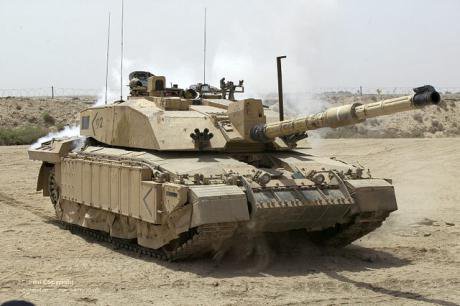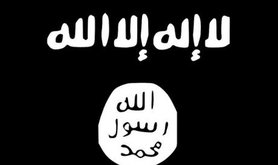
Flickr/Centre for American Progress
, CC BY-ND 2.0
It is a fundamental principle of international law that states are prohibited from using force except in self-defence or unless its use is formally authorised by Security Council under Chapter VII of the UN Charter.
The Security Council has authorised the use of force against Iraq twice:
(1) in resolution 678 passed in November 1990 to expel Iraq from Kuwait, and
(2) in resolution 687, the first disarmament resolution, passed in April 1991 (after Iraq had been expelled from Kuwait) to expel Iraq from Kuwait if it re-entered.
But it has never authorised the use of force to disarm Iraq of “weapons of mass destruction” – and, since it would be a hell of a stretch to assert that Britain was acting in self-defence against Iraqi aggression when it invaded Iraq alongside the US in March 2003, it would therefore appear that Britain’s action was in breach of international law.
However, the legal advice given by the attorney-general, Lord Goldsmith, on 17 March 2003 was that “the authority to use force under resolution 678 has revived and so continues today”. In other words, a resolution passed in November 1990 to authorise military action to expel Iraq from Kuwait was said by the attorney-general to authorise military action for an entirely different purpose in March 2003. On the face of it, that is absurd, particularly when it is recalled that at most 4 of the 15 members of the Security Council were in favour of such military action in March 2003.
The attorney-general’s legal advice
In early March 2003, before the US/UK finally abandoned their quest for a 'second' Security Council resolution, the prime minister asked the attorney-general to supply him with “advice on the legality of military action” in the absence of such a resolution. This advice was contained in a 13-page document by the attorney-general dated 7 March 2003.
It was equivocal about whether military action was legal, merely saying that “a reasonable case can be made” for it, but the attorney-general stated this position unequivocally 10 days later in a written answer in the House of Lords, on 17 March 2003. There was a lot of controversy about the contents of this advice, and how the caveats in it were absent from his final view of 17 March 2003. But little attention has been paid to the most important part of the advice of 7 March 2003, which is contained in the section entitled Possible consequences of acting without a second resolution (paragraphs 32-35).
This section addressed the question that every client needs to have his lawyer answer: namely, what are the chances of me being convicted if I do what I’m thinking of doing? In this instance, would the UK be convicted of aggression, if military action is taken against Iraq? And would the prime minister himself face a trial for “the planning, preparation, initiation or waging of a war of aggression” as Hermann Goering did at Nuremberg? The attorney-general's answers were essentially: there’s very little chance of it. He said:
- – Prosecution of the UK by the International Court of Justice (ICJ) was very unlikely.
- – Prosecution of the prime minister by the International Criminal Court (ICC) was impossible – the Rome Statute didn’t include a crime of aggression at that time.
- – Intervention by domestic courts to stop military action was very unlikely – the courts had already rejected a bid by CND to stop it.
The attorney-general didn’t have to state the most important fact of all which is, as a veto-wielding permanent member of the Security Council, the UK can take any military action it likes without fear of the mildest censure from the Council, let alone economic or military sanctions being imposed to make it halt its military action.
With that, the attorney-general assured Tony Blair that it was virtually certain that neither he nor the UK would be subject to legal action if the UK took military action against Iraq. In other words, taking military action would almost certainly be cost free in legal terms for him and for the UK, whether or not the attorney-general found a way of asserting that it had Security Council authorisation.
Of course, the attorney-general's decision was of immense political importance. Had he asserted that the proposed military action was not authorised by the Security Council, most likely Tony Blair would have had to call off British participation in the invasion. In evidence to the Chilcot inquiry in January 2011, Tony Blair wrote:
“Had Peter Goldsmith not finally been of the view when he came to give his formal advice that 1441 did authorise force, then the UK could not and would not have participated in the decision to remove Saddam.” (p11)
No doubt, the US would have continued with the invasion and overthrown Saddam Hussein’s regime – the 150,000 US troops assembled in Kuwait for the invasion were not going to go home leaving Saddam Hussein in power – but international support for the US action would have been seriously undermined by the fact that, according to their former partner in the enterprise, the US action was “illegal”.
A lot hung on the attorney-general's absurd assertion that a Security Council resolution passed in November 1990 to authorise military action to expel Iraq from Kuwait also authorised military action to disarm Iraq in March 2003, when at most 4 of the 15 members of the Security Council were in favour of such military action.
The 678 revival
The attorney-general's argument that it was possible to “revive” the authorisation of the use of force in resolution 678 was not new. It was a variant of the one used before by the UK to justify taking military action against Iraq, for example, to assert that Operation Desert Fox – the bombing of Iraq in December 1998 – was authorised by the Security Council. The basic argument, set out in a leaked Foreign Office document, Iraq: Legal Background, from March 2002, is as follows:
“Following its invasion and annexation of Kuwait, the Security Council authorised the use of force in resolution 678 (1990); this resolution authorised coalition forces to use all necessary means to force Iraq to withdraw, and to restore international peace and security in the area. This resolution gave a legal basis for Operation Desert Storm, which was brought to an end by the cease-fire set out by the Council in resolution 687 (1991). The conditions for the cease-fire in that resolution (and subsequent resolutions) imposed obligations on Iraq with regard to the elimination of WMD and monitoring of its obligations. Resolution 687 (1991) suspended but did not terminate the authority to use force in resolution 678 (1990).
“In the UK’s view a violation of Iraq’s obligations which undermines the basis of the cease-fire in resolution 687 (1991) can revive the authorisation to use force in resolution 678 (1990). As the cease-fire was proclaimed by the Council in resolution 687 (1991), it is for the Council to assess whether any such breach of those obligations has occurred. The US have a rather different view: they maintain that the assessment of a breach is for individual member states. We are not aware of any other state which supports this view.
“The authorisation of the use of force contained in resolution 678 (1990) has been revived in this way on certain occasions. For example, when Iraq refused to cooperate with the UN Special Commission (UNSCOM) in 1997/8, a series of SCRs (Security Council resolutions) condemned the decision as unacceptable. In 1205 (1998) the Council condemned Iraq’s decision to end all cooperation with UNSCOM as a flagrant violation of Iraq’s obligations under 687 (1991), and restated that the effective operation of UNSCOM was essential for the implementation of the resolution. In our view these resolutions had the effect of causing authorisation to use force to revive, which provided the legal basis for Operation Desert Fox.”
If these legal gymnastics are taken seriously, at any time since the first disarmament resolution was passed in April 1991, each and every state in this world (for example, Iran) has had Security Council authority to take military action against Iraq to enforce Security Council disarmament resolutions. the UK can take any military action it likes without fear of the mildest censure from the Council, let alone economic or military sanctions
The US apparently took this view unconditionally. Britain attached the proviso that the Security Council must have recently passed a resolution saying that Iraq was in breach of its disarmament obligations.
No military action for disarmament
In fact, the revival argument doesn’t hold water.
If, as the Foreign Office document above contends, 687 was a ceasefire resolution that suspended, but did not terminate, the authority to use force in 678, there would have been no need to include a further authority to use force in 687. The inclusion of this new authority is a proof positive that the Security Council did not consider that the authority in 678 was merely suspended, and would revive if Iraq violated the cease-fire conditions by, for example, re-entering Kuwait.
In fact, 687 (1991) brought about a permanent ceasefire and terminated the authority to use force in 678. This is clear from examining 687 in conjunction with resolution 686, passed a month earlier in March 1991. The latter established a provisional ceasefire, but in paragraph 4 explicitly states that the authorisation for the use of force in 678 remains in effect. No similar provision is present in 687.
Operation Desert Fox
So, the revival argument was used by the UK to justify the use of force in Operation Desert Fox in December 1998, the Security Council having deemed Iraq to be in breach of its disarmament obligations in resolution 1205 passed in November 1998.
But the Foreign Office document was very reluctant to conclude that Security Council authority existed for military action in March 2002, saying:
“A more difficult issue is whether we are still able to rely on the same legal base for the use of force more than three years after the adoption of resolution 1205 (1998). Military action in 1998 (and on previous occasions) followed from specific decisions of the Council; there has now not been any significant decision by the Council since 1999. Our interpretation of resolution 1205 was controversial anyway; many of our partners did not think the legal basis was sufficient as the authority to use force was no[t] explicit. Reliance on it now would be unlikely to receive any support.”
(But, surely if Iraq was in breach of its disarmament obligations in December 1998, it was still in breach in March 2002, since inspectors were absent from Iraq in the interim?)
Operation Desert Fox was solely a US/UK affair, so the opinion of “our partners” didn’t matter. This time, however, the UK was hoping to involve others in military action against Iraq and more explicit authority from the Security Council for the use of force was desirable.
And so, in the spring of 2002, the British government decided that it would be best to take the matter back to the Security Council and seek more explicit authority. By September 2002, the US had agreed to this course of action. Resolution 1441 was passed unanimously in November 2002, but it didn’t provide authority to use force, even if Iraq refused to admit inspectors.

Flickr/Defence Images
, CC BY-NC-ND 2.0
Back to the revival argument
At this point, the government abandoned hope of explicit authorisation and accepted that it would have to fall back on the revival argument. To trigger it, a declaration by the Security Council that Iraq was in breach of its disarmament obligations was necessary. But here 1441 was a double-edged sword. On the one hand, in paragraph 1 it asserted that:
“Iraq has been and remains in material breach of its obligations under relevant resolutions, including resolution 687 (1991)”
But, on the other hand, in paragraph 2 it gave Iraq
“a final opportunity to comply with its disarmament obligations under relevant resolutions of the Council”
So 1441 could hardly be taken as an immediate trigger for the revival of 678 authority for military action. Furthermore, paragraph 4 stated that:
“false statements or omissions in the declarations submitted by Iraq pursuant to this resolution and failure by Iraq at any time to comply with, and cooperate fully in the implementation of, this resolution shall constitute a further material breach of Iraq’s obligations and will be reported to the Council for assessment in accordance with paragraphs 11 and 12 below.”
This gave the definite impression that it was up to the Security Council to decide what should be done after it had conducted its own “assessment” of any non-compliance by Iraq.
The 'second' resolution
Because of this, the UK set out to get the Security Council to adopt a 'second' resolution with one operative paragraph, which said:
“[The Security Council] decides that Iraq has failed to take the final opportunity afforded to it by resolution 1441(2002)”
If that had been passed, the Security Council would have said, in effect, that Iraq was still in breach of its disarmament obligations – since it had failed to take the opportunity provided by 1441 to fulfill its disarmament obligations. By the same reasoning, any state, for example, Iran, could have taken military action against Iraq with the authority of the Security Council
But, only 4 out of the 15 members of the Security Council supported this resolution, even though it didn’t explicitly authorise military action. At the time, of course, it was assumed that if passed it would have given a Security Council green light to military action, and certainly the UK would have used it to assert that 678 authority for military action had been revived.
However, despite President Bush twisting arms and threatening (and bugging the UN offices of recalcitrant members), the Security Council refused to endorse the 'second' resolution. So, the attorney-general was forced to modify the standard British version of the revival argument, set out in the Foreign Office document quoted above – instead of the Security Council being required to declare in a resolution that Iraq was in breach of its disarmament obligations, he adopted the US position that it was sufficient for any individual member state of the UN, for example, the UK, to make such an declaration.
The attorney-general’s answer
This brings us to the attorney-general’s written answer of 17 March 2003. The first three paragraphs are about the revival of 678 authority to take military action. The next three give an accurate summary of the effect of 1441:
“4. In resolution 1441 the Security Council determined that Iraq has been and remains in material breach of resolution 687, because it has not fully complied with its obligations to disarm under that resolution.
“5. The Security Council in resolution 1441 gave Iraq “a final opportunity to comply with its disarmament obligations” and warned Iraq of the “serious consequences” if it did not.
“6. The Security Council also decided in resolution 1441 that, if Iraq failed at any time to comply with and cooperate fully in the implementation of resolution 1441, that would constitute a further material breach.”
The seventh and eighth are the ones that matter:
“7. It is plain that Iraq has failed to comply and therefore Iraq was at the time of resolution 1441 and continues to be in material breach.
“8. Thus, the authority to use force under resolution 678 has revived and so continues today.”
Prime minister certifies
The Butler Report published in July 2004 revealed that paragraph 7 was the product of an exchange of letters between the attorney-general and Tony Blair. As explained in the report (paragraphs 383-5), the attorney-general wrote formally to Tony Blair on 14 March 2003 seeking confirmation that:
“. . . it is unequivocally the prime minister’s view that Iraq has committed further material breaches as specified in paragraph 4 of resolution 1441.”
The prime minister replied the next day, saying:
“. . . it is indeed the prime minister’s unequivocal view that Iraq is in further material breach of its obligations, as in OP4 [Operative Paragraph 4] of UNSCR 1441, because of ‘false statements or omissions in the declarations submitted by Iraq pursuant to this resolution and failure by Iraq to comply with, and co-operate fully in the implementation of, this resolution’.”
With that, according to the attorney-general, the 678 authority to take military action against Iraq, originally given in November 1990 to expel Iraq from Kuwait, revived and the upcoming US/UK invasion was said to be authorised by the Security Council. By the same reasoning, any state, for example, Iran, could have taken military action against Iraq with the authority of the Security Council at any time since 1991, if it certified that Iraq was in breach of its disarmament obligations.
Only veto-wielding members of the Security Council, who are immune from even the mildest censure by the Council, would dare justify aggression with such legal gymnastics.
This article is part of a four part series:
Part 1: Did Blair promise Bush support for regime change in March 2002?
Part 2: Lies, half-truths and omissions on the road to war against Iraq
Part 4: Al-Qaeda, ISIS, and the wider fallout from the Iraq invasion
Peter Oborne's overview is here: We don't need to wait for Chilcot, Blair lied to us about Iraq. Here's the evidence.
Read more
Get our weekly email





Comments
We encourage anyone to comment, please consult the oD commenting guidelines if you have any questions.